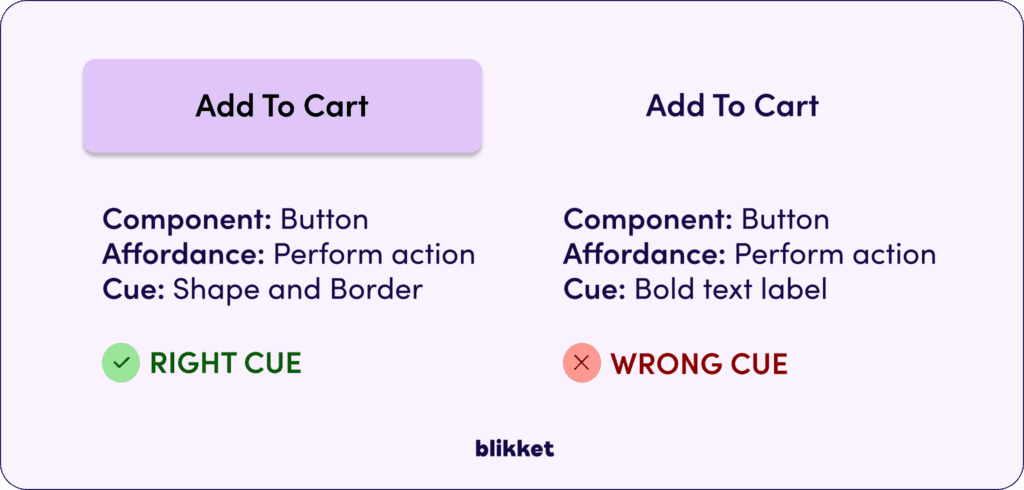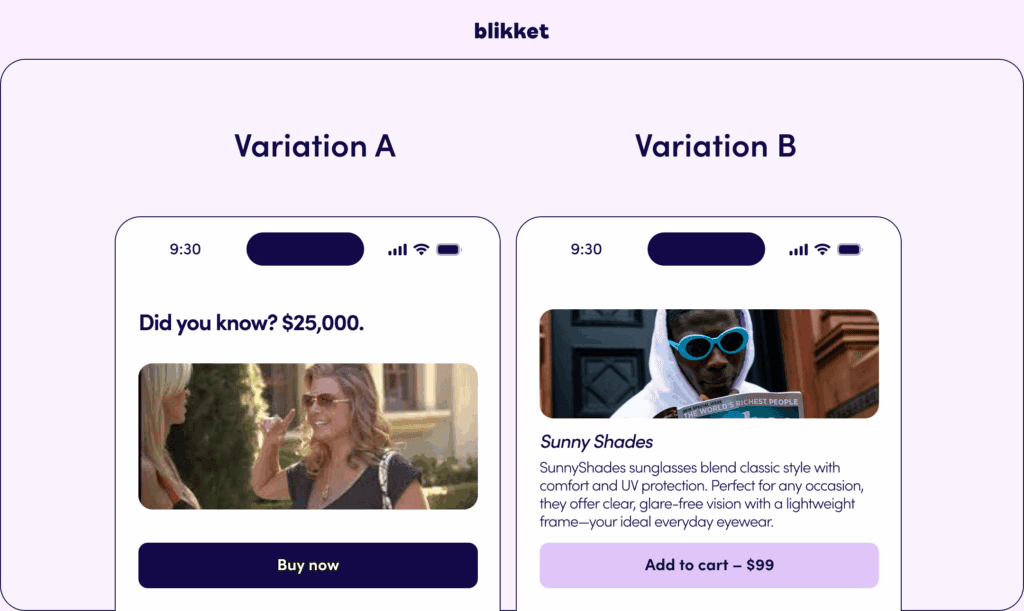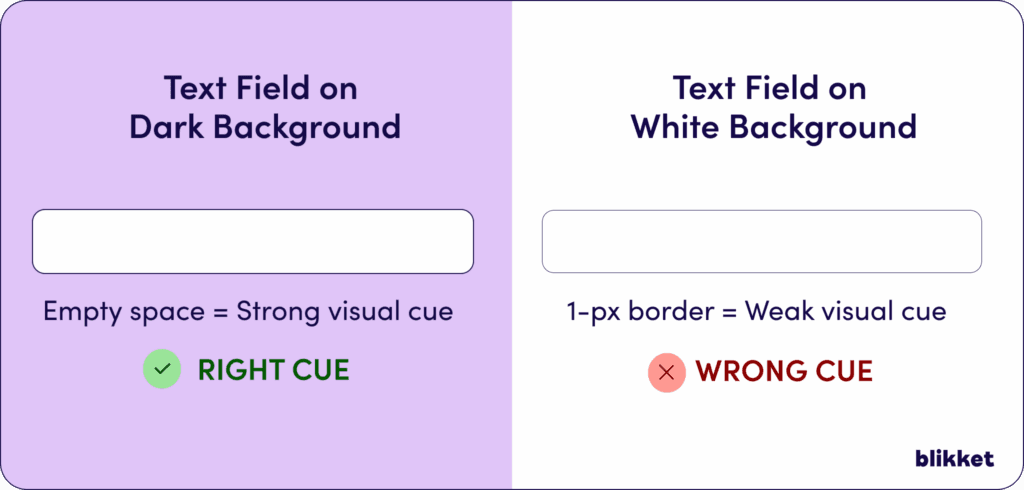Summer eCommerce Campaigns: Seizing the Season’s Opportunities
Welcome to another edition of “The Checkout Point by blikket.co,” where each week we bring you the freshest insights and trends from the eCommerce world. As we step into Week 17 and edge closer to Mother’s Day and the cusp of May, it’s clear that summer is just around the corner—and with it comes a plethora of opportunities for eCommerce businesses.
Whether you’re knee-deep in products perfect for sun-drenched days or you’re just beginning to plan your holiday sales strategy, it’s crucial to gear up now. From leveraging the charm of summer vibes to planning the tactical onslaught of Black Friday and Cyber Monday, the time to act and amplify your eCommerce strategies is now.
This week, we’re zooming in on how visual cues and strategic website adjustments can turbocharge your campaign success. The recent accolades for our blog post on using visual strategies to enhance conversions only scratch the surface of what’s possible. Today, we delve deeper into these tactics and more, from the latest updates in international shipping to innovative AI integrations in platforms like Shopify and Instagram, aimed at refining how we engage and convert shoppers.
So, brew up your favorite caffeinated (or decaffeinated – we’re not judging) beverage, and settle in as we unpack these crucial strategies and news updates. It’s going to be an enlightening ride!
Up Next: Unlocking Visual Strategies for Conversion Mastery
Stay tuned as we dive further into specific, actionable strategies that can help make your summer eCommerce campaigns not just functional but phenomenally successful.
Unlocking Ecommerce Potential Through Visual Cues
In the realm of eCommerce, visual elements play a pivotal role in guiding potential customers towards making a purchase. As outlined in the insightful blog post from Blikket.co, small tweaks such as the incorporation of arrows, strategic color usage, or the simple position of a button can create significant impacts on shopper behavior and conversion rates.

Guiding Shoppers’ Eyes With Visual Cues
The effectiveness of visual cues lies in their ability to guide the shoppers’ eyes subtly yet effectively. Humans have a natural tendency to follow directional cues, such as arrows, making them powerful tools in the eCommerce environment. Just like subtle hints in a video game, these visual nudges can guide online shoppers directly towards key actions like adding products to their cart.
Capitalizing on Seasonal Campaigns
With specific seasons in mind, utilizing visual cues becomes even more crucial. During peak shopping events such as Mother’s Day and summer sales, eCommerce stores have the opportunity to harness these visual strategies to maximize customer engagement. Incorporating vibrant colors or arrows that lead to summer-related products can significantly enhance a store’s seasonal campaigns. As the article highlights, the upcoming periods of Black Friday and Cyber Monday also represent key moments for eCommerce sites to refine these visual cues to ensure they are effectively capturing customer interest.
Creating Urgency and Improving Conversions
The beauty of visual cues does not stop at mere guidance. They also play an integral role in creating a sense of urgency. Techniques such as countdown timers for sales or highlighting limited-stock items with an eye-catching color like red can trigger quicker decision-making processes amongst shoppers. This strategic use of visual cues can make the difference between a customer browsing and a customer buying.
Quick to Test, Quick to Implement
One of the great advantages of utilizing visual cues in your eCommerce store is their ease of implementation. As the post from Blikket.co elucidates, these are often simple, quick to test, and can be integrated without major overhauls to your website design. A/B testing different colors, placements, or sizes of these cues can provide invaluable insights that allow online business owners to adjust strategies efficiently, ensuring optimal performance of their eCommerce platforms.
As eCommerce marketers, leveraging such effective and easily adaptable strategies can lead to remarkable improvements in user engagement and conversion rates. It’s not just about making your site look good; it’s about making it work efficiently to convert visits into valuable sales. The post on Blikket.co provides not just inspiration but actionable advice that can be the game-changer in your digital marketing efforts this summer and beyond.

Key Takeaway: The Power of Visualization in Ecommerce
Ultimately, the key takeaway is clear: never underestimate the power of a well-placed visual cue. It’s about much more than aesthetics; it’s about creating a seamless, intuitive shopping experience that guides consumers right where you want them—towards the checkout. Visit Blikket.co to dive deeper into the transformative power of visual cues and arm your site with the tools it needs to thrive in the competitive world of online selling.
Navigating the Choppy Waters of International eCommerce Shipping
In the relentless tide of eCommerce, few things are as pivotal as the efficiency and reliability of international shipping. Recent developments from major shipping carriers and platforms like eBay underscore a rapidly evolving landscape, one that eBay is adjusting to by safeguarding sellers against the delays caused by tariffs. This move is a significant boon for sellers embroiled in the complexities of international logistics, particularly when unpredicted barriers such as tariff-induced delays can throw a wrench into the normally smooth gears of overseas transactions.
But eBay’s initiative is just the tip of the iceberg. For example, DHL recently shocked many by ceasing its international package delivery services to U.S. consumers. Additionally, it put a halt on all B2C shipments to the U.S valued over $800. This decision, presumably aimed at curtailing complications related to customs and logistics, significantly impacts consumers and businesses dependent on DHL for international purchases, thereby escalating the need for alternative shipping solutions in the eCommerce sector.
Amidst these transformative changes, FedEx has also announced strategic adjustments by closing parts of its network in vital locations like California and Massachusetts as detailed by Supply Chain Dive. These closures might prompt eCommerce businesses to reconsider their distribution and logistics strategies, potentially leading to increased shipping times or higher costs.
Impact on eCommerce Operations
These sweeping changes across major logistics service providers echo through the small and medium-sized enterprises (SMEs) engaged in global commerce. Picture an SME that prides itself on offering unique, global products. Now, with shipping avenues shrinking and costs likely inflating, the challenge isn’t just about staying afloat but strategically navigating these rough waters to ensure products reach customers in a timely, cost-effective manner.
Furthermore, as we roll into summer eCommerce campaigns, the stakes are even higher. Campaigns during this season require impeccable timing and logistics for promotions around holidays like Mother’s Day and throughout the bustling summer shopping periods. Delays or complications could derail the effectiveness of these campaigns, directly impacting sales and customer satisfaction.
It’s not merely a logistical headache; it’s about maintaining customer trust and satisfaction. Every delayed shipment or failed delivery chips away at the carefully built reputation of reliability and customer service that many online stores strive to uphold.
Strategic Adaptations for Success
Adapting strategies to cope with these challenges is crucial. Whether reconsidering shipping partners, adjusting inventory to better align with reliable logistics, or enhancing communication with customers regarding potential delays, the goal is to minimize disruption. Moreover, staying informed and agile in response to these industry shifts is not just beneficial—it’s essential for survival in the high-stakes world of eCommerce.
Ultimately, the changing dynamics of international shipping require eCommerce businesses to be ever-vigilant and flexible. By anticipating disruptions and adjusting strategies accordingly, businesses can protect themselves from potential fallout and maintain the consistent, quality service that customers expect. Now more than ever, in the arena of international eCommerce, foresight and adaptability are the names of the game.
Revamping eCommerce: eBay’s Smart Play with Checkout.com
In the latest twirl on the eCommerce dance floor, eBay is setting new standards by partnering with Checkout.com. This ambitious collaboration is designed to overhaul eBay’s payment system, promising smoother transactions and enhanced security. For small-time sellers and eCommerce giants alike, this means a more reliable platform during peak seasons and major sales campaigns, like the bustling summer season.

Impact on Sellers: Faster Payments, Better Sales
Imagine you’re an eBay seller gearing up for the lucrative summer months, where products like beach towels and swimwear see a spike in demand. The typical worries about transaction hiccups could be a thing of the past with Checkout.com’s technology streamlining the payment process. This improvement is not just about handling the increase in transactions but also about fostering trust with buyers, ensuring they come back for more.
Revolutionizing Promotions with Enhanced Send-Offers Tool
Alongside the upgraded payment systems, eBay is also set to boost its Send-Offers tool, an enhancement eagerly awaited by sellers. According to updates from eCommerce Bytes, this tool will allow sellers to dispatch more personalized offers to potential buyers. This capability could be crucial for clearing out seasonal inventory efficiently, a timely intervention as sellers prepare for the summer eCommerce rush.
The Bigger Picture: Building Long-term Customer Relationships
These advancements go beyond simply boosting short-term sales; they are about elevating the seller-customer relationship to a new level. Personalized interactions, much like being recognized in your favorite pizza shop, can make customers feel special and valued. This isn’t just good business; it’s smart business, fostering loyalty and encouraging repeat purchases, which are gold in the eCommerce sector.
With eBay’s efforts to streamline both payments and promotional capabilities, the platform is paving the way for sellers to not just survive but thrive during busy sales periods. These upgrades come at a critical time as eCommerce continues to evolve rapidly, keeping everyone on their toes and ready for the next big wave in online selling.
Shopify Harnesses AI with ChatGPT for Enhanced Summer eCommerce Campaigns
As recent news reveals, Shopify and ChatGPT are setting a new benchmark in eCommerce flexibility and efficiency. This pioneering collaboration promises to be a boon for businesses gearing up for summer campaigns. This enhancement comes at a critical juncture, especially with annual shopping spikes like Mother’s Day and essential summer sales on the horizon.
What Does This Mean for Small Business Owners?
Imagine being a small business owner and now having access to AI-powered tools capable of crafting dynamic product descriptions and tailored marketing messages. The level of personalization and efficiency this brings could very well redefine consumer engagement during key shopping periods. With these tools, businesses can expect a significant uptick in both reach and relevance.
Enhancing the Accessibility of Advanced Tools
The truly exciting aspect of this development lies in its accessibility. Shopify aims to democratize advanced digital tools, making them user-friendly and approachable for newcomers in the eCommerce space. This approach not only levels the playing field but also empowers businesses at an earlier stage of development to compete more aggressively during high-stakes sales periods like Black Friday and Cyber Monday.

Strategic Implementation for Seasonal Sales Success
The timing of Shopify’s integration with ChatGPT couldn’t be more perfect. Businesses already in the midst of preparing for summer sales can now leverage AI to refine and enhance their marketing strategies. From beach towel vendors to boutique summer apparel shops, every merchant on Shopify now has a secret weapon for capturing customer attention and driving sales.
The synchronization of cutting-edge technology with seasonal sales demand showcases Shopify’s strategic foresight in supporting businesses when it matters most. This synergy not only boosts sales potential but also enhances customer experiences by ensuring they see products that are aligned with their needs and preferences.
In summary, Shopify’s new AI-enhanced tools are set to transform summer eCommerce campaigns, offering unprecedented advantages in terms of marketing precision and consumer engagement. For eCommerce marketers and owners, understanding and utilizing these new capabilities could well be the key to your most successful season yet.
Unlocking the Potential of Instagram’s New Storylines for Summer eCommerce Campaigns
As eCommerce marketers, keeping abreast of the latest social media innovations is crucial, especially when these platforms roll out features that could redefine user engagement and campaign strategies. Recently, Instagram has introduced an experimental feature known as Storylines, which builds upon the familiar Stories format by adding a collaborative twist. This new feature is noteworthy, particularly for summer eCommerce campaigns seeking enhanced visibility and engagement.
Imagine you are gearing up for a vibrant Mother’s Day sale or even gearing strategies towards peak summer months. Instagram’s Storylines allows your brand to pair up with another, weaving a cohesive narrative that showcases the products of both brands simultaneously. Not only does this foster a sense of community and partnership, but it also amplifies reach as followers from both brands engage with the storyline. This concept is akin to creating a shared adventure that narrates a story, which can be particularly potent during key selling periods like summer. Discover more about Instagram’s test phase of this feature in their recent Mashable article.
Analytics and Visibility in Collaborative Campaigns
One might wonder about the intricacies of visibility and data analytics with such collaborative efforts. How will brands measure the success of their joint campaigns? While Instagram has not yet provided detailed insights on this, it’s conceivable that participants in these Storylines could receive access to shared analytics. This would enable brands to understand the impact of their story collectively and make data-driven decisions to optimize future campaigns.
The Role of Artificial Intelligence in Managing Campaigns
Instagram isn’t stopping at collaborative stories. The platform is significantly enhancing its use of artificial intelligence to ensure a safer environment and more tailored user experiences. Recently, Instagram has integrated AI to detect age discrepancies among its teenage users, automatically restricting their accounts to safeguard them. This advancement reported by TechCrunch highlights the dual role of AI – improving user safety and potentially impacting the reach of marketing campaigns targeted at younger demographics.
Beyond safeguarding, AI’s incorporation extends into predictive analytics and inventory management, vital for planning high-stake campaigns during summer and other peak periods. Leveraging AI, brands can better predict trends, manage stock levels, and even personalize customer interactions, thus leading to more efficient and impactful marketing strategies.
As the summer season approaches, enabling brands to put a creative spin on their campaigns through features like Instagram Storylines combined with AI-driven analytics could well be the recipe for success. Whether it’s optimizing inventory for a summer sale based on predicted trends or crafting a unique collaborative story for Mother’s Day, the innovative use of technology is transforming how brands engage with their audience dynamically and ethically.
In sum, as the digital marketing landscape continually evolves, staying flexible, creative, and informed about new tools and technologies such as Instagram’s Storylines and AI enhancements will likely be key to navigating forthcoming challenges and seizing opportunities in the vibrant world of eCommerce.
Capturing the Summer eCommerce Campaigns Wave with AI
As summer sales start to simmer, eCommerce platforms like Etsy, Amazon, and eBay are harnessing the power of Artificial Intelligence (AI) not just to ride the wave, but to control it. AI is reinventing how consumers shop and interact with online products, creating a tailored shopping experience that makes generic browsing seem quaint. But what does this mean for traditional eCommerce campaigns, especially as we approach high-stakes sales periods like Black Friday and Cyber Monday?
AI vs. Traditional Campaign Strategies
In the debate of SEO vs. PPC, AI introduces a significant shift. Gone are the days of indiscriminate ad placements where the strategy seemed to be ‘throw everything at the wall and see what sticks’. Instead, AI’s data-driven approach means ads are now crafted and shown based on individual user preferences and behaviors—glossing over the rest who are less likely to engage. This not only enhances user experience by reducing unwanted spam but also ensures that marketing budgets are spent more judiciously, maximizing return on investment.
Timing is Everything
For eCommerce businesses, timing can be the difference between a successful campaign and a lukewarm one. AI steps into this arena by predicting when customers are most likely to need specific products. For instance, think about the preparatory frenzy for seasonal events like Mother’s Day or summer holiday sales. AI can analyze past consumer behavior patterns and predict peak buying times, allowing businesses to fine-tune when they ramp up their marketing efforts.

The Flip Side: A Question of Privacy
While the benefits are clear, there’s an elephant in the room—privacy. Tailored ads are convenient and arguably less intrusive than random blasts, but they also raise concerns about the amount of data being harvested and analyzed. This tightrope between personalization and privacy is one of the main battlegrounds for AI in eCommerce. Balancing these will be crucial as businesses navigate the potential pitfalls of personal data handling, aiming to maintain consumer trust while offering superior, personalized shopping experiences.
As eCommerce marketers, it’s essential to keep watching this space. AI may not be packing boxes or conjuring garden gnomes yet, but its impact on eCommerce strategies is undeniable, promising a not-so-distant future where shopping feels magically prescient but respectful of our privacy boundaries. With the summer eCommerce campaigns gearing up, tapping into AI could be more than just a strategic move—it might be the key to staying relevant in an ever-evolving marketplace.
Wrapping Up the Week with a Focus on Summer eCommerce Campaigns
As our hosts Max and Rachel emphasized in this week’s episode of The Checkout Point, positioning your eCommerce business for success in the summer requires innovation and a keen eye for current trends. Whether you’re tweaking your website’s visual elements or planning robust summer campaigns, now is the perfect time to leverage the insights shared.
The surge of activities around Black Friday, Cyber Monday, and even summer sales like Mother’s Day, provides a unique opportunity to engage with customers in dynamic ways. Remember the highlighted importance of using visual cues to enhance online shopping experiences? Applying these conversion tricks could be transformative for your brand, especially when combined with strategic summer campaign planning.
Staying Ahead of the Curve
It’s clear from today’s discussion that staying updated with the latest trends and preparing for upcoming events are crucial. From Instagram’s new features to Shopify’s AI tools, incorporating these innovations could set your store apart in a crowded marketplace. As Max and Rachel pointed out, it’s not just about preparing for the immediate next season but being proactive with your strategies to captivate and retain customers.
Engage and Innovate: Your Turn!
So, what’s your next move as you harness the potential of summer eCommerce campaigns? Are there specific visual strategies you plan to implement? How will your eCommerce platform stand out during the competitive summer season? Perhaps, you’re considering integrating some of the latest tech advancements mentioned earlier. Let’s brainstorm and get creative!
We encourage you to share your thoughts and plans. What did you find most insightful from today’s podcast, and how will you apply these tips to your summer eCommerce strategies? Engage with us in the comments below or on our website, Blikket.co. Remember, your interaction drives our community and helps all of us grow and refine our approaches.
Join us next week for more tips, laughs, and invaluable eCommerce insights. Here’s to crafting memorable and effective summer campaigns. Cheers to boosting your eCommerce endeavors!










